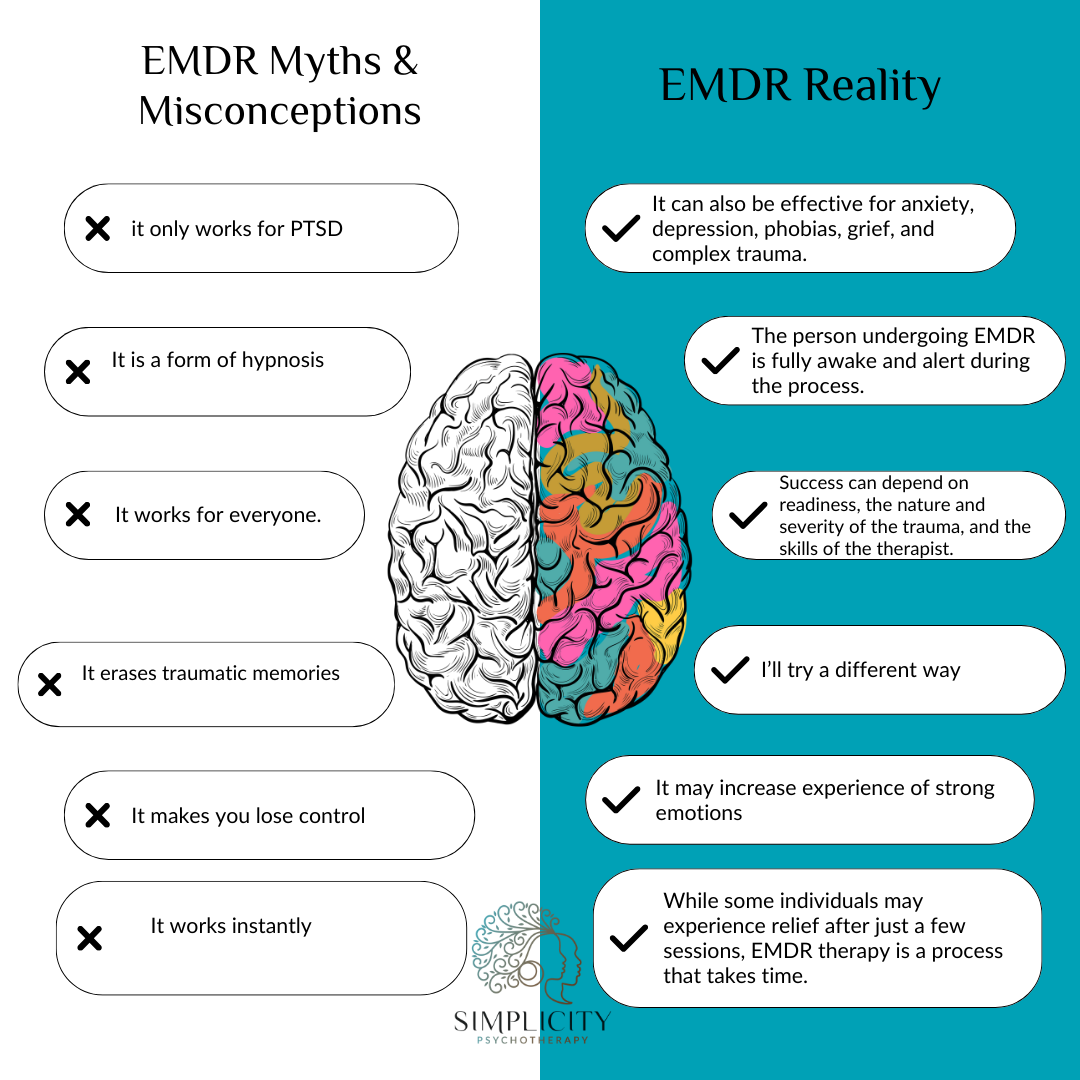Introduction to EMDR
What is EMDR
EMDR, or Eye Movement Desensitization and Reprocessing, is a psychotherapy approach developed to help individuals process and heal from traumatic or distressing experiences. It was initially created by Francine Shapiro in the late 1980s. EMDR is based on the idea that traumatic memories are often inadequately processed by the brain and can continue to cause emotional distress and psychological symptoms.
EMDR stands out as a unique therapeutic approach because of its specialized focus on memory processing and its use of bilateral stimulation. Unlike traditional talk therapies, EMDR’s structured protocol guides you through the systematic reprocessing of distressing memories. This means that rather than merely discussing past experiences, EMDR actively helps you transform the emotional charge associated with these memories. Through techniques like eye movements or auditory tones, EMDR engages your brain’s natural ability to process information, allowing you to make new, healthier associations with past events.
You will be asked a set of questions to access and activate the negative experience and the desired adaptive resolution. Sets of visual, auditory, or tactile bilateral stimulation will be applied as you are encouraged to just “free associate” and allow the brain to work through the experience spontaneously and without logical connection (free association.)
Although, EMDR focuses on the brain’s ability to constantly learn, taking past experiences, and updating them with present information, it is important to note that it is not necessary to talk about all the details of your experiences for them to be processed.
Why EMDR?
EMDR is renowned for its effectiveness in addressing trauma. Whether it’s a history of abuse, a traumatic event, or unresolved distressing memories, EMDR offers a structured and evidence-based approach to process these experiences. This can result in a profound sense of resolution, reduced emotional distress, and a pathway towards healing.
Secondly, EMDR is particularly valuable for individuals struggling with conditions like Post-Traumatic Stress Disorder (PTSD). It provides a means to alleviate symptoms caused by negative beliefs systems, intrusive thoughts, nightmares, and severe anxiety, often associated with traumatic events. Beyond symptom reduction, EMDR empowers clients to regain control over their lives, fostering personal growth, improved self-esteem, and enhanced coping skills. It offers a fresh start, unburdening clients from the emotional weight of their past and helping them build a more positive and fulfilling future. Whether seeking relief from trauma-related symptoms or aiming for personal growth and well-being, EMDR can be a valuable tool on the journey to healing and recovery.

Here’s how EMDR typically works:
1. Assessment: Your therapist will begin by evaluating your history and identifying specific traumatic memories or distressing experiences that require attention.
2. Desensitization: During EMDR sessions, you will focus on a distressing memory while simultaneously engaging in bilateral stimulation. This stimulation can involve tracking the therapist’s hand movements with your eyes, listening to alternating tones, or experiencing tapping sensations. This process is believed to enhance the brain’s ability to process traumatic memories.
3. Reprocessing: As you continue to work through the memory, our goal is to modify the way it is stored in your brain. This often involves replacing negative beliefs or emotions associated with the memory with more adaptive ones.
4. Integration: Over time, EMDR aims to help you incorporate the reprocessed memory into your overall life experience, reducing the emotional intensity and distress linked to it.
How long does EMDR take?
As always, Simplicity Psychotherapy will tailor the length of your treatment to the complexity of your concerns and the amount of flexibility present as the memory reprocesses. Multiple sets of reprocessing will continue until the past experience has been updated to a perspective that serves you in present day.
Frequently, EMDR is used in conjunction with other treatment approaches as you move towards your goals.
Additional information can be found in this EMDR-Client-Handout
